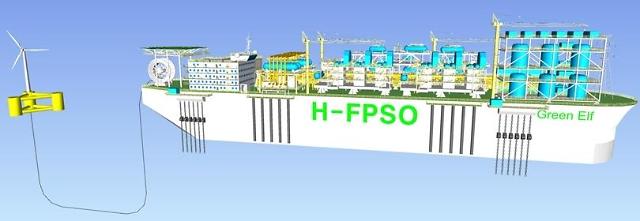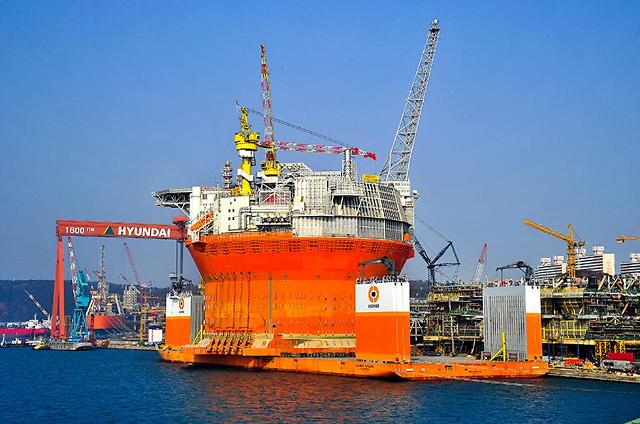
[Courtesy of Korea Maritime & Ocean University ]
SEOUL -- A South Korean consortium involving state research bodies and private companies has been launched to develop a floating offshore plant using wind power to produce hydrogen. The consortium aims to build a 1.0-megawatt pilot plant in 2022 before developing and demonstrating a gigawatt-class plant in 2030.
The consortium led by Korea Maritime & Ocean University (KOMU) and Korean Register (KR), a maritime classification society, would develop a floating hydrogen production storage and offloading facility called "Hydrogen FPSO." The consortium also involves other research bodies as well as shipbuilding, marine, and hydrogen-related companies.
KOMU regards Hydrogen FPSO as an optimal option for South Korea to achieve energy independence, export related technologies and accelerate the use of hydrogen fuel as it can ease public anxiety over hydrogen gas and help South Korea achieve carbon neutrality. The construction of charging stations for hydrogen fuel cell vehicles is slow because South Koreans feel unsafe about having them near residential areas.
"In the future, KMOU will also conduct research and development and demonstration of Hydrogen FPSO using our patented floating nuclear power system," KMOU president Doh Deog-hee said in a statement on August 11. South Korea has joined an international race to develop floating offshore nuclear power plants.
KEPCO E&C, the power plant design and engineering wing of a state utility company, has teamed up with Daewoo Shipbuilding & Marine Engineering (DSME), a domestic shipbuilder, to develop a floating offshore nuclear power plant based on a small modular reactor (SMR) named BANDI-60S, which is a block-type pressurized water reactor. The block-type design in which main components are directly connected, nozzle-to-nozzle, can eliminate the risk of a large-break loss-of-coolant accident.
SMRs have been studied to address the limitations of traditional light-water reactors using low-enriched uranium that cost a lot to replace nuclear fuel and require a vast emergency evacuation zone, nonproliferation and waste management. Small reactors designed with modular technology allow for less on-site construction, increased containment efficiency, and enhanced safety.




![[FOCUS] Environmental activists oppose development of advanced small modular reactors](https://image.ajunews.com/content/image/2021/06/18/20210618093752767200.jpg)